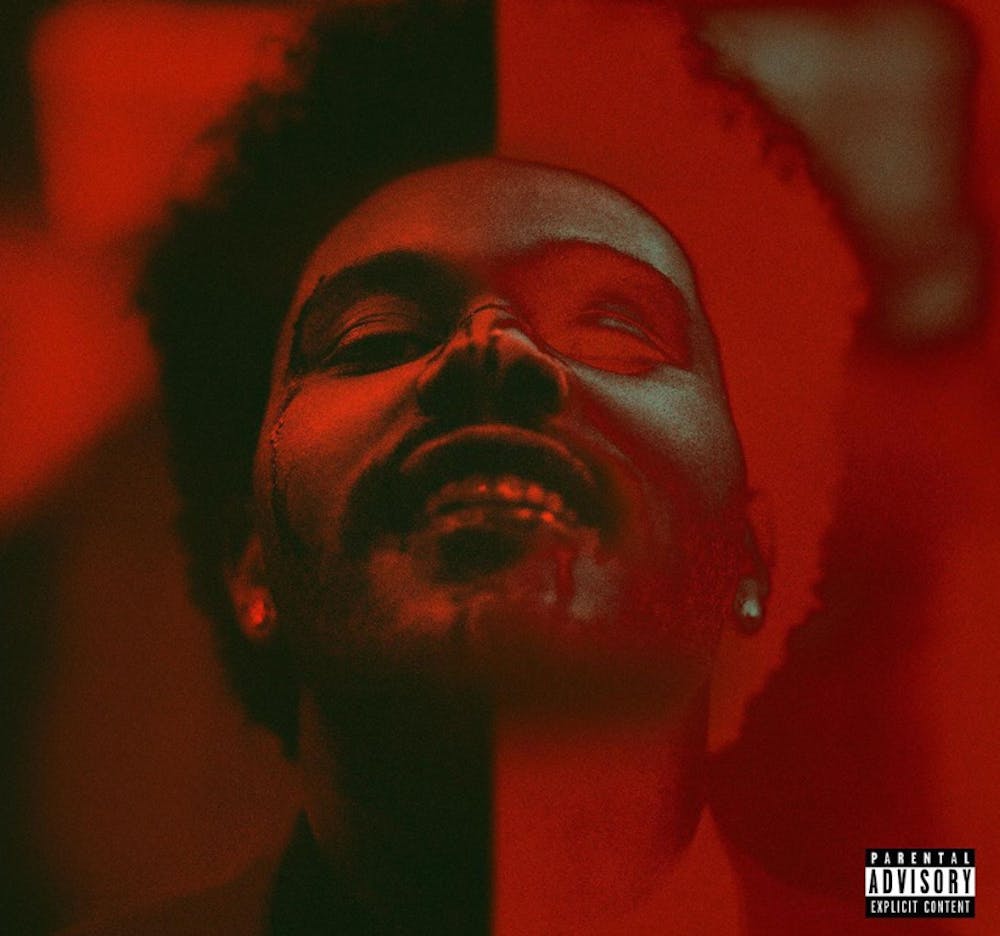Abel Tesfaye, most commonly known as The Weeknd, became a sensational sellout during his peak, which occurred after Beauty Behind the Madness and more largely, Starboy, dropped. Since then, The Weeknd has strayed from the spotlight, despite releasing his neglected EP, My Dear Melancholy, which resonated with his early and founding listeners, but did not break charts like his prior albums did.
With the release of After Hours, The Weeknd is able to satisfy both his original followers and fans who began admiring him after his pop-star image and stardom arose. However, The Weeknd does not shy away from his standard reputation of singing about sex, drugs and brutal confessions in After Hours.
After Hours differs from Beauty Behind the Madness and Starboy in the sense The Weeknd does not present tracks featuring other artists like he has done in the past. Nonetheless, he still worked on After Hours with collaborators such as Oneohtrix Point Never, Metro Boomin, Tame Impala’s Kevin Parker and Max Martin, who co-wrote and co-produced “Can’t Feel My Face.”
Though the majority of the 14 tracks contain heavily electronic based backbeats, the first three tracks on the album, “Alone Again,” “Too Late” and “Hardest to Love” discuss heavy subjects contrasted against upbeat, lively rhythms.
In “Alone Again,” The Weeknd sings, “Check my pulse for a second time (A second time) / I took too much, I don't wanna die / I don't know if I can be alone again (Alone again).” Despite the burdensome lyrics discussing an overdose, the song remains stimulating.
As for ballads, “Scared to Live” is one of few on the album and undoubtedly, one of the more impressive ones.The track is authentic and honest about what it is like to be the reason someone has a hard time loving others.
“Snowchild” and “Faith” are two other tracks that have listeners feeling nostalgic as both tracks embody many of The Weeknd’s tracks from Trilogy, as they discuss more drug overdosing, the pressure to succeed and Tesfaye’s classic self loathing.
In contrast, tracks like “Heartless,” “Blinding Lights,” “In Your Eyes” and “Save Your Tears” are undeniably more jubilant with any bit of sadness behind the lyrics, masked by the modernity in “Heartless,” the disco-inspired vibe found in “Blinding Lights” and the saxophone outro in “In Your Eyes.” The three tracks are ones that could easily be found on The Weeknd’s 2016 Starboy, allowing the album to exhibit a perfect proportion of old and new.
Though the electropop sound that is also found in “Save Your Tears” may begin to seem repetitive, each track is ultimately its own with the electronic dance music unifying the album as a whole piece of art versus an album composed collectively of distinctly different tunes.
The Weeknd assuredly channeled his identity as an artist while producing the album, as he does not try to emulate a pop-star nor his depressive earlier music, but instead sings about substantial material paired with a vastly different EDM beat that a lot of artists would not necessarily combine. The lyrics contrasted with the beat of each track is what makes the entire album so unique, yet so fitting.
The album proves that The Weeknd’s true talent lies in his alluring voice and ability to tell stories. Conclusively, The Weeknd’s hiatus is much appreciated, as listeners get to applaud and treasure his latest work of art while experiencing an unfamiliar, yet contemporary and timeless kind of music.
Rating: 5/5






